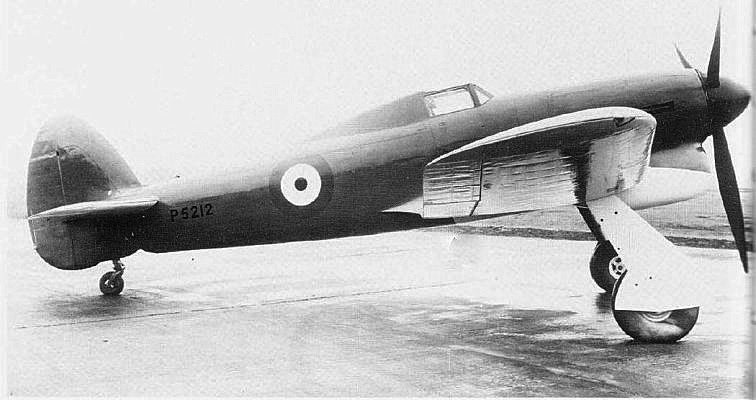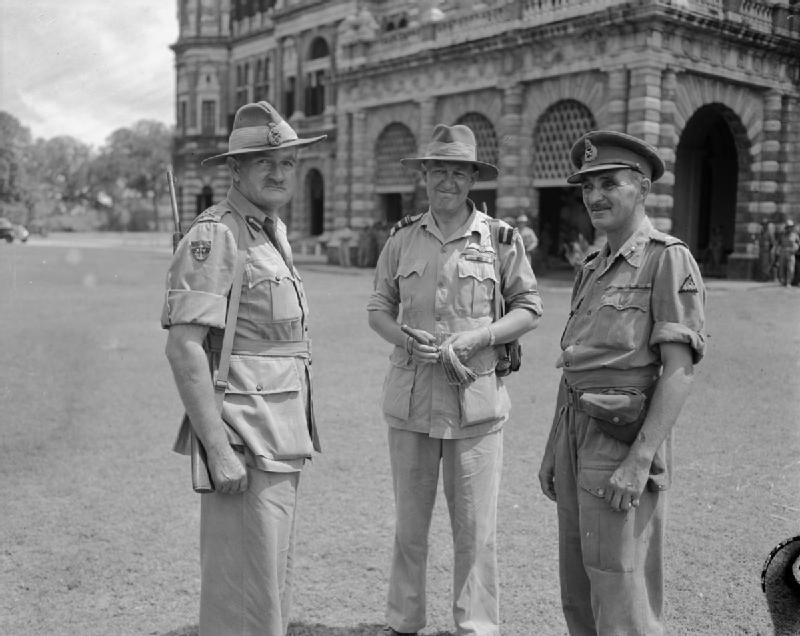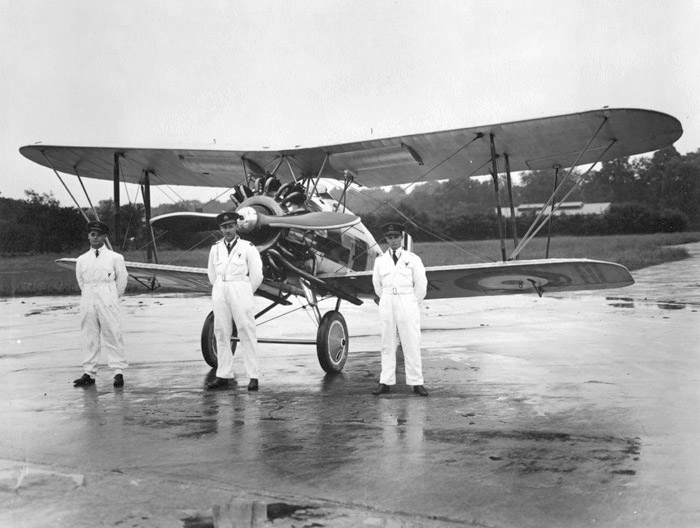|
Hugh Dundas
Sir Hugh Spencer Lisle Dundas, (22 July 1920 – 10 July 1995), nicknamed List of aviators by nickname#C, "Cocky", was a fighter pilot in the Royal Air Force (RAF) during the Second World War and later a senior broadcasting executive. He was promoted to squadron leader and awarded the Distinguished Flying Cross (United Kingdom), Distinguished Flying Cross at the age of 21, advanced to Wing Commander (rank), wing commander at 22 and, at 23, was awarded the Distinguished Service Order and became one of the youngest group captains in the RAF. Dundas retired from the RAF in 1949, and was Knight Bachelor, knighted in 1987 for his services to business and the media. Early life Born in Doncaster, on 2 July 1920, Dundas was a scion of a noble family. He was the grandson of the Scottish Liberal politician John Dundas (1845–1892), John Dundas and a great-great-grandson of Lawrence Dundas, 1st Earl of Zetland.Bishop 2004, p. 76. Dundas was also related to the Earl of Halifax.Franks 1980, p ... [...More Info...] [...Related Items...] OR: [Wikipedia] [Google] [Baidu] |
Doncaster
Doncaster (, ) is a city in South Yorkshire, England. Named after the River Don, it is the administrative centre of the larger City of Doncaster. It is the second largest settlement in South Yorkshire after Sheffield. Doncaster is situated in the Don Valley on the western edge of the Humberhead Levels and east of the Pennines. At the 2021 census, the city had a population of 308,100, while its built-up area had a population of 158,141 at the 2011 census. Sheffield lies south-west, Leeds north-west, York to the north, Hull north-east, and Lincoln south-east. Doncaster's suburbs include Armthorpe, Bessacarr and Sprotbrough. The towns of Bawtry, Mexborough, Conisbrough, Hatfield and Stainforth, among others, are only a short distance away within the metropolitan borough. The towns of Epworth and Haxey are a short distance to the east in Lincolnshire, and directly south is the town of Harworth Bircotes in Nottinghamshire. Also, within the city's vicinity are Barnsley, ... [...More Info...] [...Related Items...] OR: [Wikipedia] [Google] [Baidu] |
Lawrence Dundas, 1st Earl Of Zetland
Lawrence Dundas, 1st Earl of Zetland (10 April 1766 – 19 February 1839) was a Scottish MP who sat in the House of Commons from 1790 to 1820 when he was raised to the peerage. Early life Dundas was the son of Thomas Dundas, 1st Baron Dundas and was born in Westminster on 10 April 1766. He was educated at Harrow and was admitted at Trinity College, Cambridge. He married Harriot Hale, one of the twenty-one children of General John Hale and his wife Mary Chaloner, by whom he had three sons and four daughters. Political career Dundas was elected Whig Member of Parliament for Richmond, North Yorkshire in 1790. Twelve years later he exchanged this seat for that of York, and in 1808 returned to Westminster as representative for his old Richmond seat. In 1811 he was again elected MP for York, and became Lord Mayor of the city that same year, having been an alderman since 1808. He was Lord Mayor a second time in 1821. In 1820 Dundas succeeded his father as second Baron Dundas ... [...More Info...] [...Related Items...] OR: [Wikipedia] [Google] [Baidu] |
Daily Express
The ''Daily Express'' is a national daily United Kingdom middle-market newspaper printed in tabloid format. Published in London, it is the flagship of Express Newspapers, owned by publisher Reach plc. It was first published as a broadsheet in 1900 by Sir Arthur Pearson. Its sister paper, the ''Sunday Express'', was launched in 1918. In June 2022, it had an average daily circulation of 201,608. The paper rose to become the largest circulation newspaper in the world under Lord Beaverbrook, going from 2 million in the 1930s to 4 million in the 1940s. It was acquired by Richard Desmond's company Northern & Shell in 2000. Hugh Whittow was the editor from February 2011 until he retired in March 2018. In February 2018 Trinity Mirror acquired the ''Daily Express'', and other publishing assets of Northern & Shell, in a deal worth £126.7 million. To coincide with the purchase the Trinity Mirror group changed the name of the company to ''Reach''. Hugh Whittow resigned as editor ... [...More Info...] [...Related Items...] OR: [Wikipedia] [Google] [Baidu] |
Malta
Malta ( , , ), officially the Republic of Malta ( mt, Repubblika ta' Malta ), is an island country in the Mediterranean Sea. It consists of an archipelago, between Italy and Libya, and is often considered a part of Southern Europe. It lies south of Sicily (Italy), east of Tunisia, and north of Libya. The official languages are Maltese and English, and 66% of the current Maltese population is at least conversational in the Italian language. Malta has been inhabited since approximately 5900 BC. Its location in the centre of the Mediterranean has historically given it great strategic importance as a naval base, with a succession of powers having contested and ruled the islands, including the Phoenicians and Carthaginians, Romans, Greeks, Arabs, Normans, Aragonese, Knights of St. John, French, and British, amongst others. With a population of about 516,000 over an area of , Malta is the world's tenth-smallest country in area and fourth most densely populated sovereign cou ... [...More Info...] [...Related Items...] OR: [Wikipedia] [Google] [Baidu] |
Mentioned In Despatches
To be mentioned in dispatches (or despatches, MiD) describes a member of the armed forces whose name appears in an official report written by a superior officer and sent to the high command, in which their gallant or meritorious action in the face of the enemy is described. In some countries, a service member's name must be mentioned in dispatches as a condition for receiving certain decorations. United Kingdom, British Empire, and Commonwealth of Nations Servicemen and women of the British Empire or the Commonwealth who are mentioned in despatches (MiD) are not awarded a medal for their actions, but receive a certificate and wear an oak leaf device on the ribbon of the appropriate campaign medal. A smaller version of the oak leaf device is attached to the ribbon when worn alone. Prior to 2014, only one device could be worn on a ribbon, irrespective of the number of times the recipient was mentioned in despatches. Where no campaign medal is awarded, the oak leaf is worn direc ... [...More Info...] [...Related Items...] OR: [Wikipedia] [Google] [Baidu] |
Hawker Typhoon
The Hawker Typhoon is a British single-seat fighter-bomber, produced by Hawker Aircraft. It was intended to be a medium-high altitude interceptor, as a replacement for the Hawker Hurricane, but several design problems were encountered and it never completely satisfied this requirement.Thomas and Shores 1988, p. 16. The Typhoon was originally designed to mount twelve .303 inch (7.7 mm) Browning machine guns and be powered by the latest engines. Its service introduction in mid-1941 was plagued with problems and for several months the aircraft faced a doubtful future. When the ''Luftwaffe'' brought the new Focke-Wulf Fw 190 into service in 1941, the Typhoon was the only RAF fighter capable of catching it at low altitudes; as a result it secured a new role as a low-altitude interceptor. The Typhoon became established in roles such as night-time intruder and long-range fighter. From late 1942 the Typhoon was equipped with bombs and from late 1943 RP-3 rockets were added to i ... [...More Info...] [...Related Items...] OR: [Wikipedia] [Google] [Baidu] |
Stanley Vincent
Air Vice Marshal Stanley Flamank Vincent, (7 April 1897 – 13 March 1976) was a pilot in the Royal Flying Corps (RFC) and later a senior commander in the Royal Air Force (RAF). He was the only RFC/RAF pilot to shoot down enemy aircraft in both world wars. Early life Stanley Vincent was born in Hampstead, north London, on 7 April 1897, the son of Dr Charles Vincent and Hannah Phillips. He was educated at Lancing College. Flying career Vincent was commissioned into the Royal Flying Corps (RFC) after the completion of his training in 1915 at the Central Flying School, Upavon. His first posting was to No. 60 Squadron RAF in France in April 1916, equipped with Morane single seat and two seaters. Vincent was appointed to 'A' Flight equipped with the Morane Bullet scout. He claimed an LVG two-seater in July (the Squadron's first victory), another two seater in September and an Albatros two seater 'Out of control' in early 1917, by now flying the Nieuport 17. In March 1917 he r ... [...More Info...] [...Related Items...] OR: [Wikipedia] [Google] [Baidu] |
Douglas Bader
Group Captain Sir Douglas Robert Steuart Bader, (; 21 February 1910 – 5 September 1982) was a Royal Air Force flying ace during the Second World War. He was credited with 22 aerial victories, four shared victories, six probables, one shared probable and 11 enemy aircraft damaged. Bader joined the RAF in 1928, and was commissioned in 1930. In December 1931, while attempting some aerobatics, he crashed and lost both his legs. Having been on the brink of death, he recovered, retook flight training, passed his check flights and then requested reactivation as a pilot. Although there were no regulations applicable to his situation, he was retired against his will on medical grounds. After the outbreak of the Second World War in 1939, however, Douglas Bader returned to the RAF and was accepted as a pilot. He scored his first victories over Dunkirk during the Battle of France in 1940. He then took part in the Battle of Britain and became a friend and supporter of Air Vice Marshal ... [...More Info...] [...Related Items...] OR: [Wikipedia] [Google] [Baidu] |
RAF Tangmere
RAF Tangmere was a Royal Air Force station located in Tangmere, England, famous for its role in the Battle of Britain, and one of several stations near Chichester, West Sussex. The famous Second World War aces Wing Commander Douglas Bader, and the then inexperienced Johnnie Johnson were stationed at Tangmere in 1941. History First World War The aerodrome was founded in 1917 for use by the Royal Flying Corps as a training base. In 1918 it was turned over to the Aviation Section, U.S. Signal Corps (USSC) as a training ground, and continued as such until the end of the Great War in November of that year, after which the airfield was mothballed. Inter-War Years In 1925 the station re-opened to serve the RAF's Fleet Air Arm, and went operational in 1926 with No. 43 Squadron equipped with biplane Gloster Gamecocks (there is a row of houses located near the museum entrance called Gamecock Terrace). As war threatened in the late 1930s, the fighter aircraft based at Tangmere beca ... [...More Info...] [...Related Items...] OR: [Wikipedia] [Google] [Baidu] |
War Substantive Rank
Military ranks are a system of hierarchy, hierarchical relationships, within armed forces, police, intelligence agencies or other institutions organized along military lines. The military rank system defines dominance, authority, and responsibility in a military hierarchy. It incorporates the principles of exercising power and authority into the military command hierarchy, chain of command—the succession of commanders superior to subordinates through which command is exercised. The military chain of command constructs an important component for organized collective action. Uniforms denote the bearer's rank by particular insignia affixed to the uniforms on a number of countries. Ranking systems have been known for most of military history to be advantageous for military operations, in particular with regards to logistics, command, and coordination. As time went on and military operations became larger and more complex, military ranks increased and the ranking systems themselves ... [...More Info...] [...Related Items...] OR: [Wikipedia] [Google] [Baidu] |
Helmut Wick
Helmut Paul Emil Wick (5 August 1915 – 28 November 1940) was a German flying ace of World War II. He was a wing commander in the Luftwaffe (air force) of Nazi Germany, and the fourth recipient of the Knight's Cross of the Iron Cross with Oak Leaves, the nation's highest military decoration at the time. Born in Mannheim, Wick joined the Luftwaffe in 1936 and was trained as a fighter pilot. He was assigned to Jagdgeschwader 2 "Richthofen" (JG 2—2nd Fighter Wing), and saw combat in the Battles of France and Britain. In October 1940, he was given the position of wing commander of JG 2—the youngest in the Luftwaffe to hold this position. Wick was shot down in the vicinity of the Isle of Wight on 28 November 1940, most likely by the British ace John Dundas, who was himself shot down by Wick's wingman. Wick was posted as missing in action, presumed dead. By then he had been credited with the destruction of 56 enemy aircraft in aerial combat, making him the leading Germ ... [...More Info...] [...Related Items...] OR: [Wikipedia] [Google] [Baidu] |
Battle Of Britain
The Battle of Britain, also known as the Air Battle for England (german: die Luftschlacht um England), was a military campaign of the Second World War, in which the Royal Air Force (RAF) and the Fleet Air Arm (FAA) of the Royal Navy defended the United Kingdom (UK) against large-scale attacks by Nazi Germany's air force, the Luftwaffe. It was the first major military campaign fought entirely by air forces."92 Squadron – Geoffrey Wellum." ''Battle of Britain Memorial Flight'' via ''raf.mod.uk.''. Retrieved: 17 November 2010, archived 2 March 2009. The British officially recognise the battle's duration as being from 10 July until 31 October 1940, which overlaps the period of large-scale night attacks known as |

_Oak_Leaf_Cluster.jpg)




